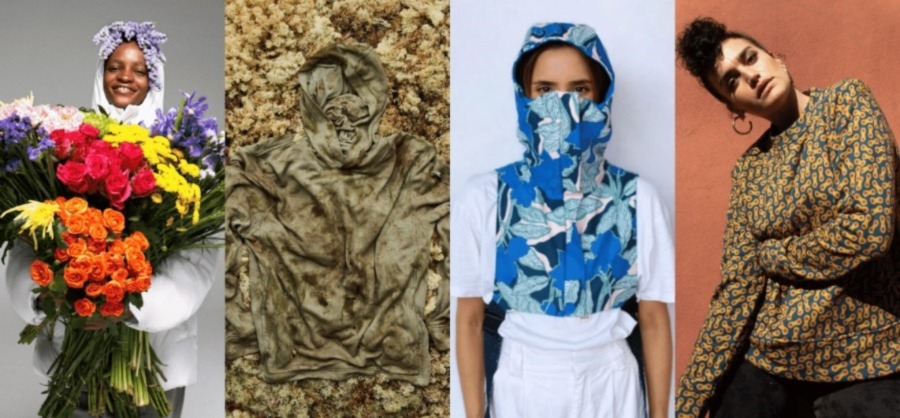Sustainable innovation along the fashion value chain is pursued in terms of technological, business model and system innovation, with the aim of achieving such goals as eco-efficiency, sufficient consumption and slow fashion. Of these, eco-efficiency aims to “either reduce resource use to produce the same output, or to produce more clothes with a given number of resources as input”. The focus is on technological development in order to improve efficiency, promoting sustainability by generating less waste. Application of this principle has become increasingly common, with brands promoting sustainable materials and technologies to optimize production from design to end of life. Many brands now have a sustainable or ‘green’ line in their collections produced with bio based and/or biodegradable materials, developed in-house or in collaboration with one of the many startups focusing on sustainable materials. Likewise, many have taken steps towards digitizing their design process to reduce the waste generated by sampling and prototyping.
The problem with an approach based on eco-efficiency alone is that replacing unsustainable technologies and materials with sustainable alternatives doesn’t change the unsustainability resulting from the industry’s consumption culture. When the problem is overproduction and overconsumption, making this production leaner and greener doesn’t fully solve its social and environmental impact, particularly when an increase in efficiency actually spurs an increase in consumption.
Calls have therefore been made for business model innovation to complement technological innovation, with system innovation providing the guiding principles. In this context, a powerful but often misunderstood concept is ‘slow fashion,’ raised as an antithesis to the current paradigm of fast fashion based on mass production, hyper consumption, short product life cycles and price competition. Following the logics of a slow fashion paradigm, sustainable business models have been suggested in opposition to their unsustainable counterparts, including those aimed at extending lifecycles by focusing on quality and durability in design or by offering repair, reuse, resale and recycling services throughout the garment’s lifetime. Some brands have already begun experimenting with repair and resale services, although other options such as customization and consumer co-design have not been as thoroughly explored yet. The goal is to not only enhance the durability of garments, but to increase satisfaction, attachment and sense of responsibility for both business and consumers. Importantly, this takes into account the reality of changing tastes and styles, i.e. the aesthetic, identity-constructing function of fashion consumption.
It is therefore perhaps unsurprising that much sustainable innovation has attempted to stick as close to existing practice as possible. More often than not, one practice is swapped for another that is more or less its equivalent while keeping the overarching value proposition intact. Hence the same technological functions are fulfilled using new technologies and existing business models are changed one component at a time. While poor quality and planned obsolescence are a straightforward example of ‘fast’ fashion, simply improving durability doesn’t automatically constitute ‘slow’ fashion if production and consumption patterns don’t change as a result, for instance when take back schemes actually increase rather than reduce fashion consumption.
It has consequently been argued that the locus of unsustainability resides not so much in the technologies and business models used, but in the production and consumption cultures shaping their use. In this context, ‘sufficient consumption’ has been suggested as an alternative to mass production and overconsumption, meaning consumption is ‘sufficient’ rather than ‘excessive,’ meeting needs instead of desires. The focus here is on slowing fashion not just by slowing product lifecycles but by slowing the very practice of clothing, focusing on the durable joy of use over the temporary joy of acquisition.
Importantly, there is a need here to acknowledge the aesthetic, expressive function that most modern forms of consumption have taken, fashion chief among them. This implies that the difference between ‘need’ and ‘desire’ that is central to sufficiency-based consumption is not as intuitive a distinction as may be assumed. Rather, many forms of consumption that might practically constitute a desire more than a need may nevertheless be experienced as such, not in terms of protecting one’s body via clothing but to express one’s identity and aesthetic experience. This complicates the principle of ‘sufficiency’ in sufficient consumption and stresses the need for consumption to be sufficient in a way that is both sustainable as well as empathetic to not just the practical but the aesthetic needs served by fashion, even in a slow fashion paradigm.

